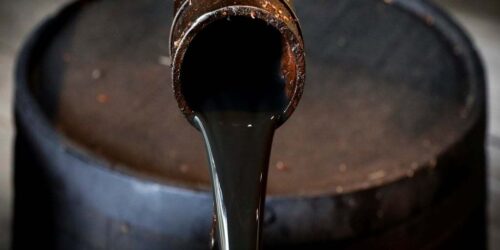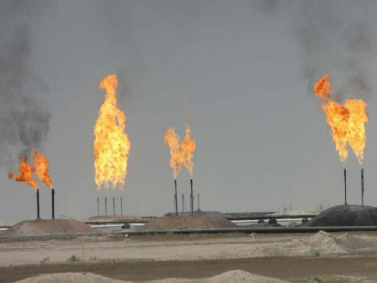Even before Russia invaded Ukraine, diesel fuel was in short supply due to a drop in global refining capacity.
Now, with sanctions on Moscow, Russia’s fuel exports to Europe are down and there is a global scramble for supply that has sent prices to record levels.
“When you’re seeing crude rallying, you’ve seen diesel outpacing it just because of supply concerns. We’re already at eight-year lows for distillate inventories,” one analyst said.
Even before Russia invaded Ukraine, the fuel that runs the global economy was in short supply.
Now some analysts say there could be spot shortages of diesel fuel and prices may stay elevated, even if oil and gasoline decline.
Those higher diesel fuel prices are also stoking inflation.
“I’ve started to use the term diesel ‘crisis.’ It clearly is a crisis that’s happening before our eyes. I wouldn’t rule out lines, shortages or $6 [price] in places beyond California,” said Tom Kloza, head of global energy research at OPIS. “I wouldn’t say it’s a shortage yet. Europe, I think they’re headed for a shortage.”
A drop in demand if prices become too high could temper that outcome. The low supply of diesel fuel is the result of a loss of refining capacity worldwide, after Covid wreaked havoc on the oil industry.
Kloza said it is the middle of the barrel — diesel — that has been hit the hardest.
Since Russia invaded Ukraine in late February, the price of oil has traded much higher, with volatile swings. West Texas Intermediate crude futures were at about $107 per barrel Wednesday, after trading as high as $130.50 on worries about shortages due to sanctions on Russia.
Diesel price rises more than gasoline
“When you’re seeing crude rallying, you’ve seen diesel outpacing it just because of supply concerns. We’re already at eight-year lows for distillate inventories,” said Matt Smith, lead oil analyst Americas at Kpler.
“So what you’re really seeing is while everyone is focused on the crude side of things, prices have really been pushing on because Europe is short diesel and it has to import a lot of diesel, whereas it exports gasoline,” he added. “While there’s obviously concerns about the crude side of the picture, ultimately diesel is what the end-user needs.”
While gasoline prices at the pump have held steady over the past week, the price of diesel continued to rise, gaining about 8 cents per gallon to a national average of $5.12 per gallon, according to AAA. The national average for unleaded gasoline is $4.23 per gallon, up from $2.86 a year ago.
The price of diesel, however, was $2.03 per gallon cheaper at this time last year. For a truck that fuels up with 125 gallons or more, that several hundred dollars extra at every filling can result in higher costs for anyone who buys anything that gets shipped, from food to home goods to automobiles.
Contribution to inflation
“The spread between diesel and motor fuel is the widest it’s ever been in the data,” said Mark Zandi, chief economist at Moody’s Analytics. “It’s $1 a gallon … the average over the last few decades has been 30 to 40 cents. That gives you a sense of how out of balance it is. … By my calculation, one-tenth of the acceleration in [consumer price] inflation [over the past year] is due to the surge in diesel prices.”
That contribution to inflation includes related impacts.
“The farmer ploughing the field, getting the food to the store shelf: It’s the cost to FedEx and UPS getting the product we’re buying to the front porch — all of those ancillary knock-on effects,” Zandi said.
But for goods price inflation, for everything from production to shipping, the contribution of diesel prices to inflation is even greater. Zandi calculates that 17% of the acceleration of goods price inflation is due to the higher diesel costs.
“Diesel is used in farming. It’s used in a lot of industrial processes. All the machinery runs on diesel. A lot of construction runs on diesel,” said Francisco Blanch, global head of commodities and derivatives research at Bank of America. “I think it’s very problematic. Trucks run on diesel, trains run on diesel, and planes run on jet fuel which is also diesel.”





